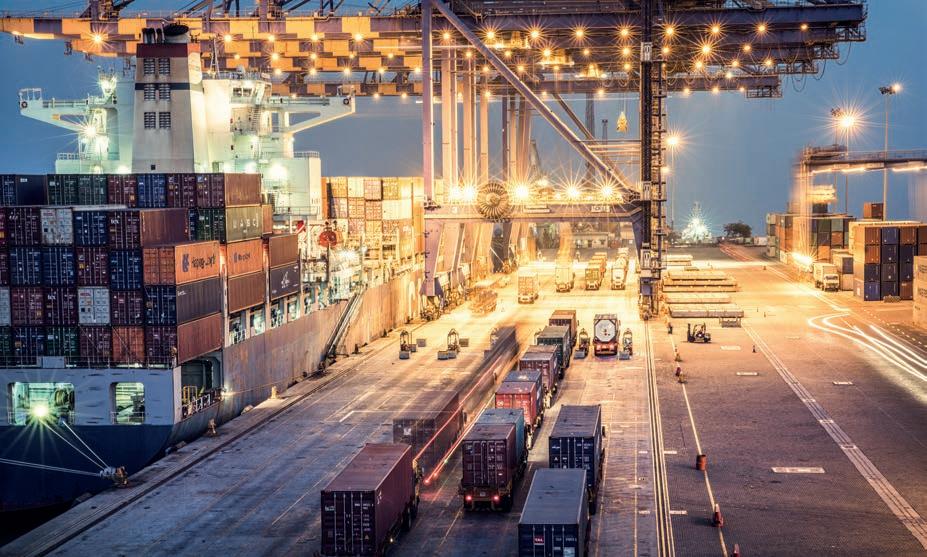
29 minute read
Matching Port Investment with Digital Efficiency
A National Port Grid and National Logistics Policy are two components in a push to improve port performance and infrastructure in India, reports Felicity Landon
India is looking to break into the ‘top ten’ league with the development of a mega container port at Vadhavan, in Maharashtra. With a price tag of US$9.2bn, the port was approved by the government in early February 2020.
Assuming the project goes ahead – it still has to navigate past environmental objections – Vadhavan will provide India with one of the world’s top ten container ports, offering a natural draft of about 20 metres and the ability to handle vessels of up to 25,000 TEU in size.
Meanwhile, Jawaharlal Nehru Port Trust (JNPT), currently at number 28 on the world’s top container ports list, is expected to move up to 17 when its fourth container terminal is completed in 2023. The port handled a record 5.1 million TEU last year – with the expansion, its capacity will be up to 10 million TEU per annum.
These are just two examples of significant physical expansion. India’s shipping ministry is currently busy drawing up a ‘National Port Grid’ which will look to make the most of the synergy between major and minor ports, the idea being that all 204 minor ports in the country could become important centres of maritime trade, if revived. This project has involved identifying specific cargoes and downstream industries linked to each port and also focusing on coastal shipping and inland waterways.
NEW NATIONAL LOGISTICS POLICY In parallel, the government’s new National Logistics Policy, due to be released soon, will be a digital drive for efficiency and cost-savings, with the focus on data analytics,
8 Aerial view of container yard and cranes at Nhava Sheva terminal
e-commerce logistics, Port Community Systems and Single Window solutions.
“The Indian government is accelerating its port development efforts as global transport giants continue to see the country as a promising freight spot,” says Rajni Patwardhan, head of marketing at Mumbai-based Kale Logistics Solutions. “That India’s ranking on the World Bank’s ease of doing business index improved from 100 in 2017 to 77 in 2018 has made news. What is not well known is that a vital role in this jump was played by the IT-enabled integration of India’s maritime infrastructure.”
As more than 90% of India’s trade by volume is carried via the maritime route, there is a continuous need to develop India’s ports and trade-related infrastructure to accelerate growth in the manufacturing industry and to assist the ‘Made in India’ initiative, Ms Patwardhan points out. “There is immense potential for modernisation and growth of Indian ports. The Ministry of Shipping, the nodal agency for ports, encompasses the shipping and port sectors, including shipbuilding and ship repair, major ports and inland water transport. As per government policy, 100% FDI is allowed in port development projects.”
The ministry’s Sagarmala programme, which is looking to reduce logistics costs for exports, imports and domestic trade, encompasses aspects such as optimising modal mix, lowering the logistics cost of bulk commodities by locating future industrial capacities near the coast, and improving export competitiveness by developing manufacturing clusters next to ports.
“Setting up new ports, modernising existing ports, developing coastal zones and boosting local employment generation, establishing connectivity between ports and road, rail, multimodal logistics parks, pipelines and waterways, as well as promoting coastal community development – through its ambitious Sagarmala project, the Indian government wants to transform the country’s ports and reduce logistics costs for domestic as well as import/export cargo by optimising infrastructure investment,” says Ms Patwardhan.
The government is also investing in and pushing for more use of coastal shipping and inland waterways, she adds. The National Waterways Act focuses on connectivity through 15,000 km of inland waterways across 24 states: “This is believed to be a game changer in the Indian logistics space, as waterway transportation can decongest roads to a large extent.”
The Indian Port Rail and Ropeway Corporation has been formed to enhance throughput and capacity by rail, and in a US$11bn project, the Dedicated Freight Corridor Corporation is overlooking the building of ‘corridors’ covering thousands of kilometres, for fast-track movement of freight from origin to port. The East Coast Corridor concept is assessed on page 24. JNPT has five container terminals, including APMT Terminals Mumbai, which handled 2 million TEU last year, DP World NSIGT (990,000 TEU) and DP World NSICT (520,000 TEU), PSA Mumbai (820,000 TEU) and JNPCT (770,000 TEU) – according to figures supplied directly by JNPT.
In August 2019, JNPT brought together all the terminals in a new inter-terminal rail handling operation agreement, designed to maximise train placement, track productivity, WSP Jan-Feb 2020_WSP 27/01/2020 14:53 Page 1
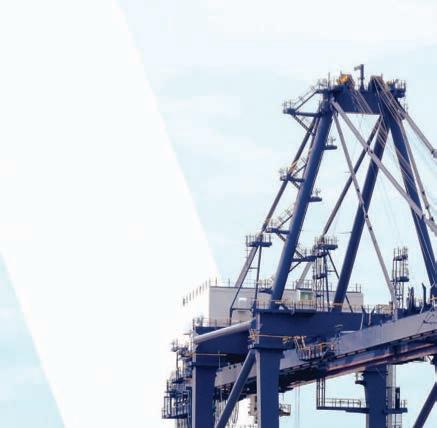
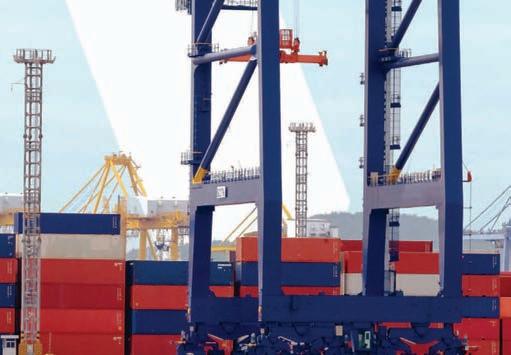
efficiency and cost-effective handling. The dwell time of import containers moved by rail fell from than 116 hours in 2018 to just over 66 hours by March 2019, while the rail share increased. At the same time, the dwell time for containers moving by road fell from more than 41 hours in 2018 to 28 hours by December 2019.

LOGISTICS NEEDS COLLABORATION Growth in both exports and domestic trade is critical to realise India’s vision of a US$5 trillion economy, says DP World.
“For higher exports growth, logistics costs need to come down to 11% of GDP from the current 13-14%,” says a spokesperson. “To reduce the overall cost of logistics, there is a
8 Containers being transported at Mundra port DPW
Cargo / Passenger and Recreation / Military Facilities
Core Services Advisory Services Port Planning and Analysis Environmental Services Engineering Services Coastal Engineering Program Management Construction Services Asset Management wsp.com/maritime
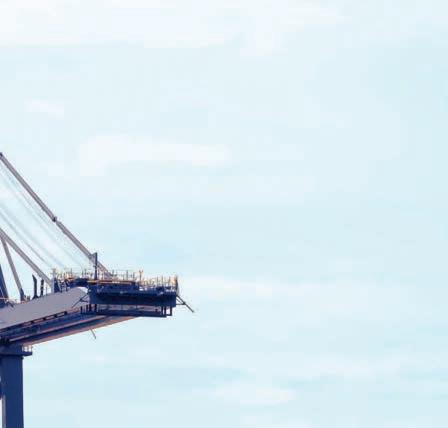
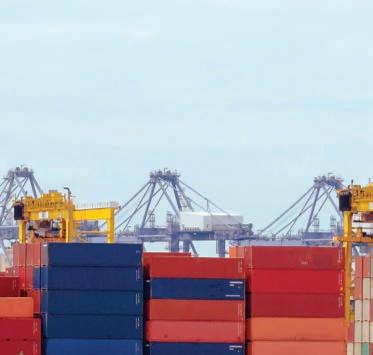
Simon Harries Tel: +44 777 322 8338 simon.harries@wsp.com
strong need to integrate the fragmented supply chain, promote the multimodal transport of freight, reducing the share of road and increasing the share of rail, and leverage the long coastline for coastal shipping as well as leveraging technology to aggregate supply chains on to an integrated platform.”
Transforming India’s logistics industry will require collaboration between the government and the private sector, says DP World. “This collaboration can drive exports growth by helping to reduce the cost of logistics and make Indian manufacturers globally competitive. The most important ways to do this is through technology adoption, reducing turnaround time at ports, improving the modal mix of transport, increasing the share of rail freight, utilising inland waterways and coastal shipping, and building integrated supply chain platforms to offer end-to-end solutions for customers.”
WHAT ARE THE TERMINAL OPERATORS DOING? DP World has been operating in India since 1997 and was instrumental in building the first PPP project for the government of India.
“Our network in India comprises a complete suite of supply chain capabilities across port terminals, rail, warehousing, inland rail terminals, cold chain, 3PL, express service and feeder services,” says the DP World spokesperson. “All these capabilities allow us to handle and move all types of cargo through any mode of transport and offer all kinds of storage services preferred by our customers.”
DP World is striving for more efficiency in the supply chain by integrating the fragmented logistics sector, the spokesperson adds. “We have been making significant investments in India into new assets, as well as modernising terminal operations across all the ports that we are present in. Over the last year, we have built a strong portfolio of integrated logistics assets, including rail freight, warehouses, container freight station, private freight station, free trade zones, cold chain logistics and supply chain services. Global customers will be able to leverage our services across a broader portfolio for their supply chains.”
PSA, which operates four terminals in India, is also expanding. Its operations at Mumbai, Chennai, Kolkata and Sical handle more than 2.5 million TEU per annum between them. PSA’s Bharat Mumbai Container Terminals (BMCT) which opened for operations at JNPT in January 2018, is set
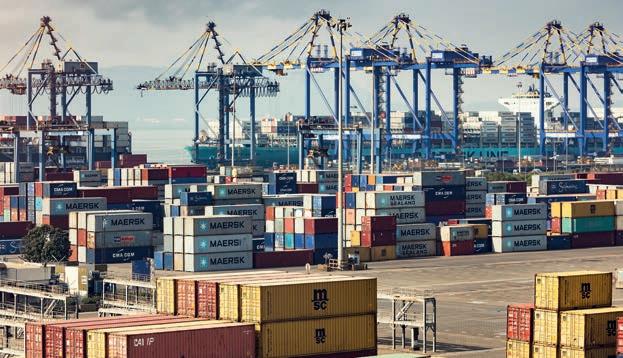
8 DP World and all operators are striving for more port efficiencies
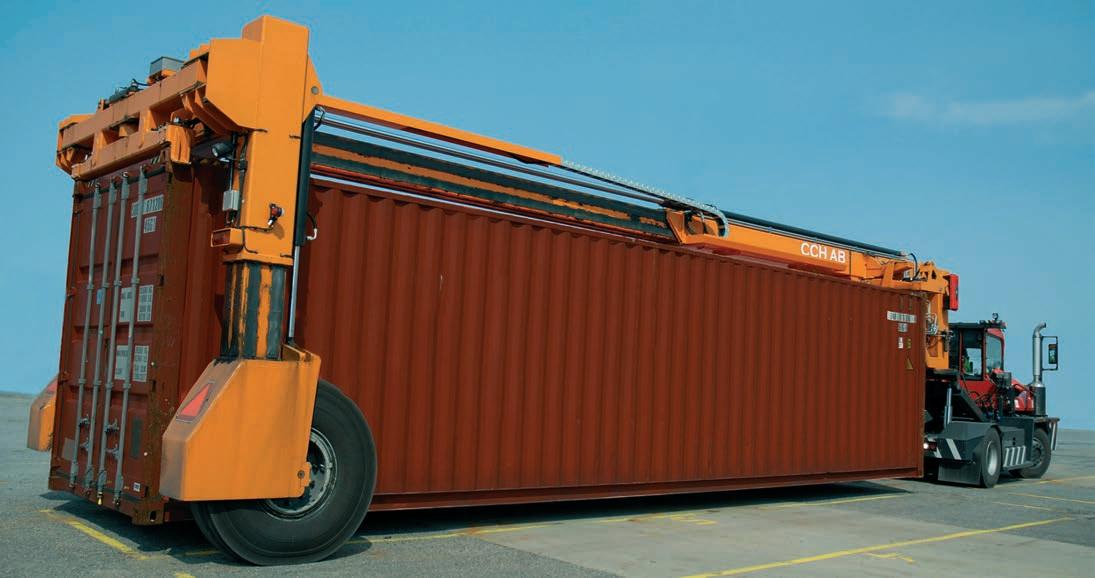
CONTLIFT Container Mover
CCH AB +46 304 67 06 87 www.contlift.com info@contlift.com
• For in-plant handling of containers • Fixed or adjustable length • Low built or high lifting • Fast and reliable • Travelling speed up to 25 km/h • Low operation and maintenance costs
to double its capacity to 4.8 million TEU per annum by the end of 2022; PSA says that when it is fully completed, it will have a berth length of 2,000 metres and the deepest berths at the complex to handle super post-panamax vessels. “PSA Mumbai serves the important industrial and manufacturing centres and cities in Northwest India, as well as India’s largest hinterland with a population in excess of 400 million. The development of BMCT will cater to the ever-increasing demand for container handling capacity, boost export/ import trade and increase economic activities between India and other countries.”
The JM Baxi Group’s International Cargo Terminal (ICT) business includes the operation of container terminals at Visakhapatnam, Kandla and Haldia, container freight stations/ICDs at Mumbai and Delhi, and cargo terminals at Rozi and Paradip.
Among major developments last year, Visakha Container Terminal saw the start of its first direct service to/from Europe – the IEX service of Hapag Lloyd, Cosco, OOCL, ONE and YML; VCTPL also emerged as a preferred gateway to Nepal in 2019. Kandla saw volumes rise from 207,600 TEU to nearly 411,000 TEU. Paradip, JM Baxi’s newest terminal, saw cargo rise from 743,287 tonnes of bulk/breakbulk and 6,448 TEU in 2018 to 2.47m tonnes and 11,182 TEU, respectively.
PCS OPERATORS WORK ON HARMONISATION ND STANDARDISATION A t the end of 2018, the Port Community System PCS 1x was launched at 13 ports simultaneously when Indian Ports Association (IPA) chairman Shri Sanjay Bhatia declared ‘Go live’. PCS 1x was designed, developed and implemented by Portall Infosystems, part of the JM Baxi Group, under the aegis of the IPA and India’s ministry of shipping – in just six months. It is built on a cloud-based open platform to enable the ‘intelligent, easy, efficient and secure’ exchange of information between public and private stakeholders.
Since launch, the number of stakeholders using the system has since increased from seven to 29, says Portall, and registered users have increased from 6,000 to more than 16,000.
During 2019, Portall added functionality to the system, facilitating government-to-business, business-to-government and business-to-business transactions; added payment gateways; organised customer engagement through workshops and road shows; focused on change management for constant improvement and transparency amongst the stakeholder communities; and put in place governance mechanisms and committee based reviews for maximum stakeholder participation, according to a senior source at Portall. Amongst other important developments, the concept of Latch On was introduced, so that technology service providers can now interact with the stakeholders via PCS 1x, dashboards and mobile applications were improved, and efforts continued to bring in harmonisation and standardisation amongst trade; in line with global standards such as UN/CEFACT and WCO.
Port Community Systems are not a new concept for Indian ports, says Portall – they have been available for at least 12 years, but were based on individual port servers and encompassed smaller functionality, so were not well utilised by maritime operators.
“There are different, disparate IT systems invested in by the ports and terminals in India, with limitations wherein stakeholders would be depending on multiple systems to have access their day-to-day business operations. The community at large had no single point of information, data consolidation and retrieval.
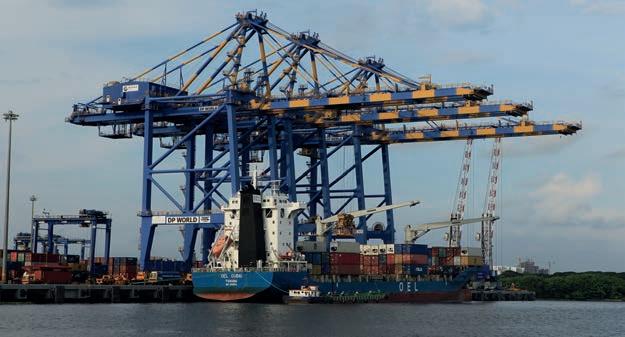
“The implementation of PCS 1x is a digital initiative driven by the IPA and Government of India towards implementing a cashless, paperless, digital regime in the shipping and maritime space. It minimises transaction time and cost to Indian export-import trade. The use of PCS 1x aims to improve India’s ranking in the Logistics Performance Index in ease of doing business.”
PCS 1x is now being used by India’s 13 major ports and seven private terminals. As to the benefits, Portall says that the direct connectivity to Customs via PCS 1x has enabled JNPT, for example, to receive data faster in a more systematic and sanitised way, with the ability to segregate data to match each stakeholder’s requirements.
It is understood that the approval of vessel profile submissions has been reduced from an average of 30 hours to 30 minutes.
Portall Infosystems and Kale Logistics are both members of the International Port Community Systems Association (IPCSA).
The past three years have been very exciting for Kale, says Rajni Patwardhan. “We have moved our major focus on to trade facilitation platforms like port community systems, air cargo community systems, national regulatory single windows and logistics e-marketplace.
“CODEX, our port community system, has enabled speedy tax refunds to the India exporter, falling from 120 days to seven days. CODEX (Container Digital Exchange), which is live at Tuticorin Port in southern India, has also reduced container dwell time by 75% and, due to quick container movement based on a single barcoded gate pass, the carbon emissions have also reduced by 75%.”
Kale wanted to build a single window platform where information from all relevant parties would be captured digitally and made available to any entity that required it, she explains. Kale deployed the first version of CODEX at Tuticorin within three months of starting the project. It provides a digital gate pass for containers, a single digital document mapped to individual containers via a barcode, accessible to every stakeholder to view and fill.
“As a container moves from one checkpoint to the other, a combination of desktop systems, mobile apps and scanners ensures that the information from the digital gate pass is directly read,” says Ms Patwardhan. “This information is then available to a port gate officer or a Customs officer who does not have to do a physical verification of the documents. The availability of information in advance allows seamless movement of the container from the CFS hub to the port. Impressed by the seamlessness of the platform and the resultant time savings during customs clearance, customs officials put up a public notice to use CODEX for all container movements at the port.”
8 Port Community Systems are not new in Indian ports but were based on individual port servers, so not well utilised
MEETING THE VISION IN SAUDI ARABIA
The Vision 2030 project is the major initiative in KSA. AJ Keyes assesses recent developments at the Kingdom’s largest container port to see if aims are being met
In 2016, Reuters reported that the Kingdom of Saudi Arabia (KSA) oil reserves were estimated to “last for another 70 years at the average production rate of 10.2 million barrels per day reported for 2015.”
The exact number of years is unknown, but while it is clear that while oil will remain a significant component of the country’s future trading activities, the concern about an overdependence on a single commodity remains, especially as this industry does not create sufficient employment opportunities for the population.
The diversification of the economy away from oil and petrochemicals means the expansion of services and other commodities, many of which can be containerised. The competition of container ports in the country, and region, has grown more fierce to attract the already, and envisioned, increasing demand for container volumes
Crown Prince and Chairman of the Council of Economic and Development Affairs, Mohammad bin Salman bin stated that “Vision 2030 is a bold yet achievable blueprint for an ambitious nation” because it “Expresses our long-term goals and expectations and it is built upon our country’s unique strengths and capabilities.” Moreover, the initiative “Guides aspiration towards a new phase of development – to create a vibrant society in which all citizens can fulfil their dreams, hopes and ambitions to succeed in a thriving economy.”
The port industry in KSA has a key part to play to helping strategic objectives being met. Measurable objectives in infrastructure are where the role of ports becomes particularly important, because 15 – 20 million TEU of additional capacity is slated as need in the future, along with 6 million TEU rail additional capacity and the building of the third Jeddah Mecca highway, amongst other aims.
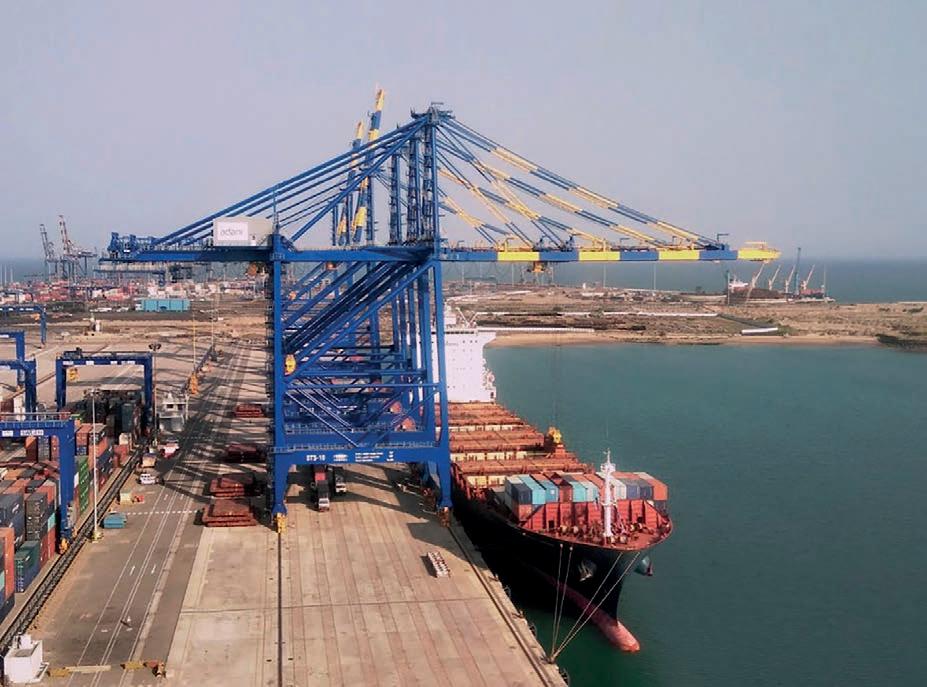
8 DP World has a 30-year concession at JIP to help support Vision 2030
DEVELOPMENTS IN JEDDAH So, how are KSA’s West Coast container ports stacking-up in pursuit of the Vision 2030 initiatives, especially at the Kingdom’s largest facility, Jeddah Islamic Port (JIP)?
Well, an immediate impact can be seen in JIP, where the current three container terminals located at the port will be reduced to two facilities in 2020.
Red Sea Gateway Terminal (RSGT), located in the northern part of the port, is to be expanded as it will be merged with the existing Jeddah North Container Terminal (NCT) when the existing NCT contract belonging to Gulf Stevedoring Contracting Company (GSCCO) expires in 2020. GSCCO is a 51% subsidy of UAE-based terminal operating company, Gulftainer.
RSGT is a joint venture of the Saudi Industrial Services Company (SISCO), which has a 60.6% stake and MMC Corporation of Malaysia, which retains a 20% interest. The remaining shares are held by a range of smaller stakeholders. RSGT has signed a new 30-year concession with the Saudi Arabia Ports Authority (Mawani), which will see the Phase I newly consolidated operation have 2,600m of berthing supporting a terminal of 150 hectares.
The second terminal at Jeddah, in the southern part of the port, is being retained by DP World. The Jeddah South Container Terminal (JSCT) is going to see its current container capacity of 2.4 million TEU per annum increased to 3.6 million TEU per annum, as part of DP World’s new 30-year concession in Jeddah.
The Supervisory Committee for Privatisation of Transport Sector in KSA approved the concession with DP World and RSGT in support of Vision 2030 and said that the project “will activate the Memorandum of Understandings (MOUs) that Mawani had signed in the presence of HRH Crown Prince Mohammed bin Salman bin Abdulaziz last February during the inauguration of The National Industrial Development and Logistics Program, one of Saudi Vision 2030’s major initiatives.” In addition, the project will help “consolidate Mawani’s pivotal role as a key contributor towards transforming Saudi Arabia into a global logistics hub connecting the three continents.”
Sultan Ahmed Bin Sulayem, DP World Group Chairman and CEO, confirmed that the concession supported the 2030 Vision to “Transform the country into a global logistics hub” and said that there is a commitment to “Investing significantly to modernise the Jeddah South Container terminal, which will not only result in greater direct and indirect job creation but also deliver best-in-class efficiency and productivity to the Port’s operations.”
DP World confirmed that the planned infrastructure investment of US$500 million will ensure the port is a more efficient option to serve the largest container ships in service to/from Asia. Bin Sulayem added, “Beyond the terminal, our ambition is to develop inland connectivity across the Arabian Peninsula between Jeddah and Jebel Ali Port in Dubai, as well as to Saudi Arabia’s cities through smart technology-led logistics, which should support further growth in this strategic hub that connects East-to-West.”
EMERGENCE OF KING ABDULLAH PORT The reduction of three operators to two company specialists at JIP comes at a time when recent volume throughput has been challenged, due to the emergence of King Abdullah Port (KAP).
Container volumes at JIP reached a recent high of 4.74 million TEU in 2012 but have since fallen back to around 4.1 million – 4.2 million for 2019. In comparison, the privately owned and operated King Abdullah Port, a Greenfield development located approximately 100km to the north of JIP, has seen strong increases since opening in 2013. From handling just over 500,000 TEU in 2014, the port had seen throughput rise to more than 1.4 million in 2016 and by the end of 2018 total volumes had surpassed 2.3 million TEU.
There are substantial expansion plans for KSA West Coast facilities, with a high amount of new capacity to be added - overall, a 91% rise to 14.1 million TEU per annum from the current 7.4 million TEU per annum, which includes: 5 J SCT - dredging to 18m depth, expansion potential for additional 500m of quay, introduced of automated equipment. 5 RSGT - has expanded quay to 1,300m, could add up to 1,000m when gaining NCT.
5 KAP - phase II plans, with 8 new quay cranes in 2020 due for delivery.
Mediterranean Shipping Co (MSC) is an advocate of King Abdullah port and the shipping line’s strong continued support means that estimated 2019 activity at the port will have seen further increases.
There are long-term development plans that will eventually see the current Phase I capacity of 3.0 million TEU per annum continue to rise, with Phase 2 adding a further 1 million TEU per annum, before Phase 3 brings the total to 6.0 million TEU annually. Subsequently phases will see 10.6 million TEU per annum developed by the end of Phase 6, although timescales are currently unknown and likely to be driven by demand.

CONTAINER SHIPPING IN THE RED SEA The size profile of vessels deployed into the Red Sea suggests great potential for direct mainline large vessel calls at one or more deep water container ports in the region, with shorter feeder legs effectively replacing existing more distant transhipment operations. The ability to handle the ultra large vessels at the ports is therefore extremely important.
Container trades in the Red Sea, rely on the fact that the location of the terminals on the major Asia-Europe arterial trade route, allows the largest vessels being deployed by shipping lines to bypass Jeddah without significant deviation (8 nm) on their way to Europe via the Suez Canal.
This contrasts favourably with the Arabian Gulf alternative of serving the region, where there are far fewer direct calls available to the Upper Gulf. Although volumes are increasing, it is apparent that feedering of containers from Dubai and more remote hub ports such as Salalah is on the increase, together with the size of feeder vessels.
From a shipping line perspective, a call at JIP or KAP is preferable than feedering via Gulf ports. The very largest vessels are passing the port on a frequent basis, the lines are seeking to increase load factors by integrating regional ‘wayport’ calls and there is no requirement for feedering to a Saudi port. This form of “double dipping” gives lines an
8 Crown Prince and Chairman of the Council of Economic and Development Affairs, Mohammad bin Salman bin Abdulaziz


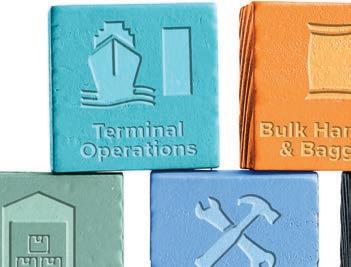


World-class terminal operations made simple
In actual fact terminal operations can be remarkably complex… it’s our experience and expertise honed over four decades which makes it seem simple.
The Nectar Group successfully operate a number of terminals around the world and off er a complete range of solutions from equipment and machinery sales to maintenance and service plans, not to mention terminal design and consultancy services… However, our solutions don’t stop at the quayside; we also provide inland logistics to a multitude of local and international blue chip clients.
But most importantly what makes our services run like clockwork is our people… our 400 plus professionals are highly skilled, trained and constantly assessed to ensure all latest technologies, governance and procedural steps are implemented to guarantee our solutions exceed with your expectations and requirements…
...simple really.
opportunity of loading cargo from Asia to Europe and Asia to Saudi Arabia, as well as from Saudi Arabia to Europe.
The increase of vessel sizes deployed increasingly means that lines want to call at a limited number of ports in order to turn vessels around quicker. This means calls are often used both for local cargo where there is a high demand as well as for transhipment volumes to a wider region.
Services calling into KSA continue to be concentrated on JIP, with 42 services being offered compared with around 20 confirmed regular services seen at KAP.
In terms of alliance activity, the Ocean Alliance concentrates its services on terminals at North Jeddah with GCT and RSGT being used until the former is phased out in 2020. THE Alliance use the DPW Jeddah facility in South Jeddah and Maersk Line undertakes its services at RSGT to protect its local market interests, in addition to 2M services calling at KAP.
The involvement of MSC (through Terminal Investment Ltd.) at KAP is seeing 2M Alliance services calling, mainly for transhipment opportunities, although Maersk Line also offer

8 KAP has seen strong increases in throughput since it opened, supported by MSC, with eight new quay cranes due in 2020
owned services to JIP facilities to handle local Saudi Arabian cargo. Clearly, container port capacity in the Red Sea is going to increase, with both JIP and KAP already planning to raise capacity and efficiencies for the future to meet local demand and the largest container ships by-passing to/from the Suez Canal.
Mawani is also working in conjunction with the Kingdom’s own internal agencies to create new operating concessions at these two major container ports, with the focus of developments at JIP clearly stated as being in support of Vision 2030.
On a practical basis, serving Riyadh will remain a key objective of ports in KSA, although for JIP it is also an effective gateway for its own local Jeddah market and also for the City of Mecca.
Yet overall, location and shipping line strategies will be key influencing factors moving forward in terms of port choice, but the ability of the Kingdom to generate the economic demand for the Vision 2030 initiative that ports can serve will remain the overall challenge.
Serving the Jewel in the Crown – East vs. West Coast?
From a port perspective, population density and location remain an important consideration because the facility in a good geographic location supported by adequate access networks (of road and rail) will remain the preferred option for the movement of cargo.
Total population in KSA is estimated to be 34.8 million inhabitants and it has continued to increase slowly from the 31.7 million recorded in 2015. Annual increases are slowing from the 3.0% seen for 2015 down to 1.5% for 2020.
The Jewel in the Crown in terms of population and consumption demand has traditionally been the capital city of KSA, Riyadh. It has an estimated population of around 8.5 million people, so ports on both the West and East coasts will always target this location.
So, what about East Coast ports, notably Dammam, and the ability to reach Riyadh? The historic position in terms of share of container traffic in KSA has shown that ports on the West Coast account for the majority of container traffic. In 2010, total volume shares were split to West Coast 70% and East Coast 30%, although for 2019 the figure is close to 65% (West Coast) and 35% (East Coast), with the increase in the East Coast share due to the growth in larger vessels arriving on direct services to/ from Asia and Arabian Gulf. For example, according to information supplied by PR News Service, the size of ships on the Asia-Mid East trades has been rising, as follows: 5 2010: Typical deep sea ship was 9,000 TEU, largest was 14,500 TEU 5 2020: Typical deep sea ships now 18,000 TEU, largest at 20,000 TEU This means a higher volume of cargo moving direct to the Gulf as opposed to a feeder service from one of the regional hubs, such as Jebel Ali or Khalifa Port.
In terms of competitiveness to serve Riyadh, distance is a factor because Jeddah to Riyadh is around 950km, while Dammam to Riyadh is 449km (direct) and Dammam to Riyadh is 556km (via Haradh).
However, the higher inland costs will be offset by significantly cheaper shipping costs. The advantage JIP can offer is that it is no sailing deviation to call for a ship en-route through the Red Sea than having to make a specific call to Dammam in the Gulf
Introduction of an intermodal rail service from Jeddah to Riyadh, as part of the US$7 billion Saudi Landbridge project, can also help t o better serve the Riyadh contestable hinterland too for JIP.
13 14 TO MAY 2020 Port of Antwerp Belgium

COASTLINK Antwerp2020 ConferenceConference
Hosted by:
BOOK YOUR PLACE NOW Building connectivity between short sea shipping & intermodal networks 13 14 TO MAY 2020
This year’s topics include:

• Market Sector Overview – Industry Challenges and New Opportunities for Short Sea & Feeder Shipping • Building Connectivity & Networks for the Future – Linking Short Sea & Feeder Shipping to Intermodal Transport Routes • Looking to the Future – Improving E Through Digitalisation and Innovation
Delegate place includes:
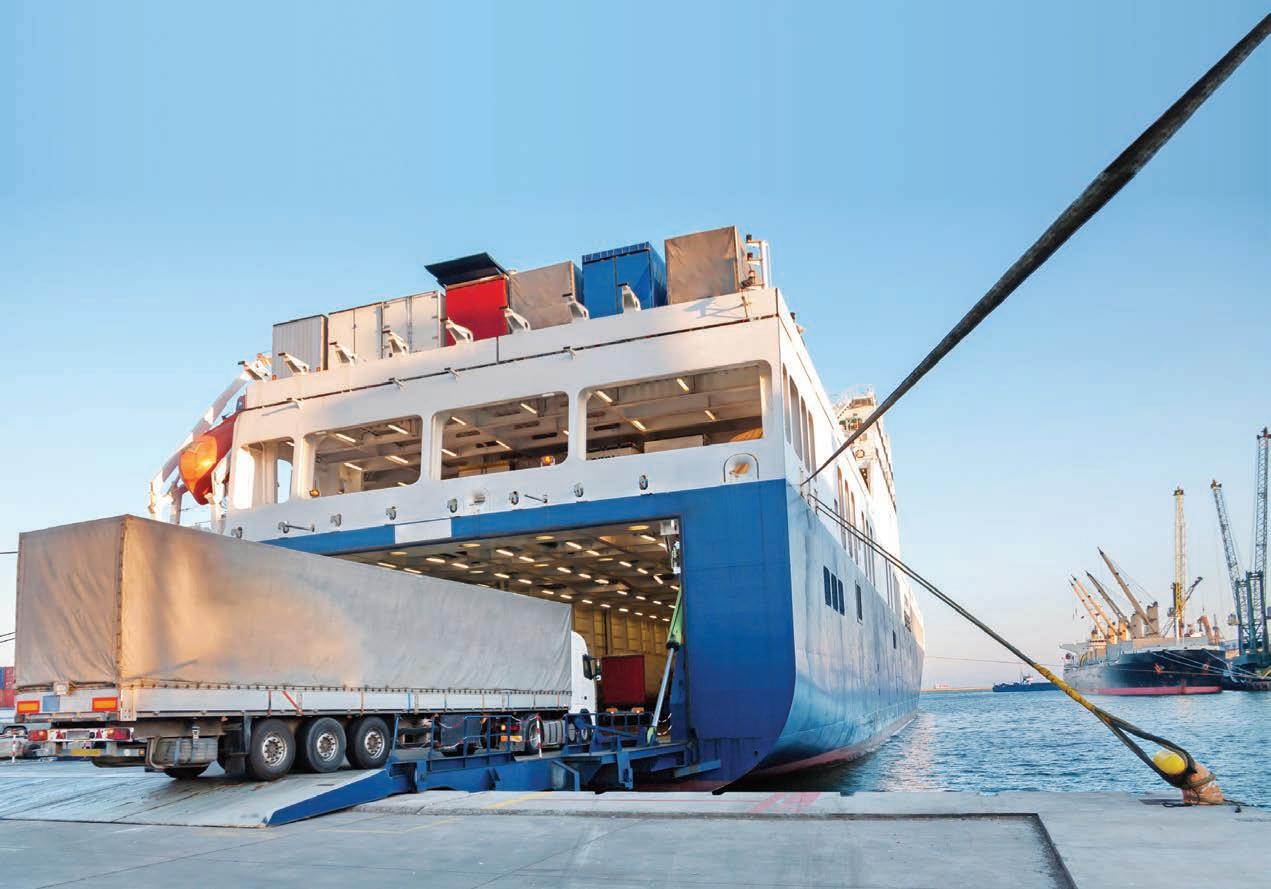
• One and a half day conference attendance • Full documentation in electronic format • Lunch and refreshments throughout • Place at the Conference Dinner • Place on the Technical Visit
visit: coastlink.co.uk/book contact: +44 1329 825335 or email: info@coastlink.co.uk visit: coastlink.co.uk
contact: email: info@coastlink.co.uk A neutral pan-European network dedicated to the promotion of short sea and feeder shipping and the intermodal transport networks that support the sector. Chairman: Sponsored by: Media partners: Meet and network with international attendees representing shipping lines, ports, logistics companies, terminal operators and freight organisations. For more information on attending, sponsoring or speaking contact the events team:
Supported by:
EXPLOITING THE OPPORTUNITIES IN SHORT SEA SHIPPING
The Port of Antwerp is adding another string to its bow – it’s increasing its short sea offering to attract new cargo streams, creating an end-to-end multimodal solution for customers
As the second largest port in Europe, Antwerp has been working hard to preserve its competitiveness and maintain its edge in the market. But at present it only offers weekly fixed shortsea and feeder services, no dedicated daily fixed short sea routes.
“A couple of years ago short sea shipping was not a focus point,” said Dries Van Gheluwe, Short sea Shipping, Port of Antwerp.
“But this aspect has been missing from our commercial strategy until now, despite the fact that the building blocks were already there for us to take advantage of the market.”

TARGETED FOCUS Mr Van Gheluwe told Port Strategy that the port now has three specific key target areas for short sea – Spain and Portugal (Iberia), the UK and Ireland and Norway.
So, it is working to attract new business from the lines that service these locations.
In doing this it will be expanding its multimodal offering as a hub by using short sea as part of its integrated port plan alongside barge and rail.
“We see short sea as part of the overall mobility connection, creating a full multimodal transport solution for our customers,” he said.
MITIGATION In the current economic climate, there are two other positive motives for getting into short sea.
To counteract any possible negative impact to business resulting from the UK’s exit from Europe and to offer customers an alternative to trucking their goods to the above locations.
It’s a solution that helps protect the port from issues that the truck industry is currently facing – namely costly delays due to congestion and the well documented shortage of truck drivers.
Creating these strong short sea shipping routes also helps mitigate losing business to other ports.
The port having its own routes means keeping a cargo contract for its whole lifetime and preventing needless movements.
DEVELOPMENT To develop the new short sea routes, the port authority has been working with three terminal operators, two on the right bank and one on the left of the Schelde.
The port itself has been playing a guiding role with these three operators, helping build case studies for them and starting up business connections with carriers.
“The most important thing for stakeholders is reliability on an operational but also on a commercial point of view,” says Mr Van Gheluwe.
Antwerp has already lowered its port dues for short sea to make it a more attractive prospect for these carriers.
It has also been helping with performing macro-economic
analysis and facilitating the necessary infrastructure needed at the terminals.
MARKET RESEARCH One case study the port is conducting is looking at the creation of a short sea route between Antwerp and Hull/ Immingham in the north of the UK.
Involving 80 different companies around the Port of Antwerp (including both destination ports and the carriers), the study revealed that the creation of this direct route could potentially transfer 50,000 teu of cargo per year from the road to short sea. If you were to factor in all of Antwerp’s prospected new short sea destinations (Norway, Portugal, Spain, the UK and Ireland), this could equate to a road/sea transfer of 250,000 teu per year.
“By consolidating this information, you can draw a business case for short sea together with the carriers and the terminals,” says Mr Van Gheluwe.
NEXT STEPS There are still some obstacles to overcome in terms of driving down costs and making short sea an even more attractive prospect.
At present Antwerp is not the cheapest maritime connection by way of the port’s inward location. So, one of Antwerp’s main obstacles going forward is convincing shippers and forwarders to look at the entire cost of the supply chain, not only compare the cost of maritime transport.
To this end, Mr Van Gheluwe says that the next steps are to “Find and create the right partnerships” for the new routes.
“There are so many opportunities for us in this sector and for strengthening multimodal transport in Europe on a wider scale. We’d be foolish if we didn’t take full advantage of this market.”
COASTLINK The Port of Antwerp is hosting the annual Coastlink conference which will run from 13 to 14 May 2020 where Dries Van Gheluwe will share his expertise on this issue. More information from www.coastlink.co.uk.
8 At present, Antwerp only offers weekly fixed short sea and feeder services, no dedicated daily fixed short sea routes






